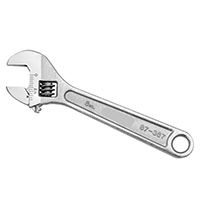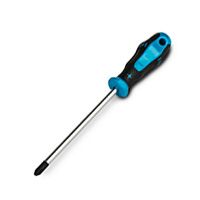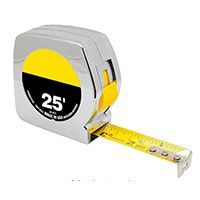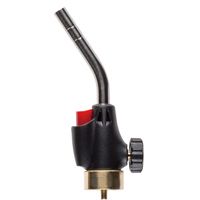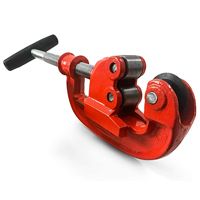We may be compensated if you purchase through links on our website. Our team is committed to delivering honest, objective, and independent reviews on home products and services.
A functional outdoor spigot is necessary for any homeowner, providing easy access to water for gardening, cleaning, and other outdoor tasks. However, like any plumbing fixture, spigots can wear out over time, leading to leaks and inefficiency. Replacing a spigot might seem intimidating, but with the right tools and knowledge, it’s a manageable do-it-yourself (DIY) project.
In this article, we’ll explore the process of replacing a spigot, including tips for selecting the right type and maintaining your new fixture. Ask This Old House plumbing and heating expert Richard Trethewey also demonstrates the steps for replacing a faulty spigot and highlights the benefits of upgrading to a frost-proof model.
Understanding Spigot Failures
Spigots typically fail in two main areas: the bonnet and the stem. These failures can lead to leaks and reduced functionality, necessitating repair or replacement.
Bonnet Leaks
The bonnet is the top part of the spigot, where the handle connects to the stem. When water leaks from this area, it’s often due to a worn-out bonnet packing. This packing acts as a seal, preventing water from escaping as the stem moves up and down. We recommend that you address bonnet leaks promptly to avoid water waste and potential damage to surrounding structures.
To fix a bonnet leak:
- Tighten the bonnet nut with pliers to compress the packing.
- If tightening doesn’t work, replace the bonnet packing.
- Wrap Teflon tape around the stem for a quick fix to create a temporary seal.
Stem Leaks
The stem is the component of the spigot that moves up and down to control water flow. Leaks at the spout often indicate a worn washer at the end of the stem. Consistent stem leaks can lead to significant water loss, and you should repair them as soon as possible.
To address a stem leak:
- Turn off the water supply to the spigot.
- Remove the handle and stem assembly.
- Replace the washer at the end of the stem.
- Reassemble the spigot and test for leaks.
Additional Leak Points
Other areas of the spigot can fail besides bonnet and stem leaks. Leaks may occur at the connection between the spigot and the house pipe or around any threaded connections where the spigot attaches. Regular inspection of these areas will help catch and resolve issues early.
Choosing the Right Spigot
When replacing a spigot, you should consider factors such as climate, durability, and ease of use.
Standard Spigots
Standard spigots are the most common and affordable option. They work well in mild climates but may be prone to freezing in colder regions. However, standard spigots can be a reliable and cost-effective choice if you live in an area without harsh winters.
Frost-Proof Spigots
For areas with harsh winters, a frost-proof spigot is a wise investment. These spigots have a longer stem that extends inside the house, keeping the washer and shutoff valve away from freezing temperatures. This design significantly reduces the risk of frozen pipes and burst spigots during cold weather and offers peace of mind when temperatures drop.
Anti-Siphon Spigots
Anti-siphon spigots include a built-in backflow preventer, which stops contaminated water from flowing back into your home’s water supply. These are especially important for spigots used with garden hoses or sprinkler systems. Preventing backflow is important in maintaining the safety and cleanliness of your water supply.
Specialty Spigots
Various specialty spigots are available, depending on your specific needs. Some models include hot and cold water options, while others feature extended reach or multi-functionality. Evaluating your requirements will help you choose the right spigot for your home.
Steps To Replace a Spigot
Replacing a spigot requires some plumbing knowledge and the right tools. Here’s a step-by-step guide:
- Shut off the water supply to the spigot.
- Locate the spigot line inside your house. Confirm that this area is accessible and prepared for the work ahead.
- Cut the pipe in an accessible location, using a bucket to catch any remaining water. Properly handling the leftover water can prevent a mess and reduce the risk of accidents.
- Remove the old spigot and pull out the attached pipe. Assess the removed spigot to determine what went wrong.
- Measure for the new pipe connection, making sure it matches the old one.
- If using a frost-proof spigot, solder the pipe into the frost-free faucet connector. Remove the inside stem first to protect the rubber washer from heat damage.
- Slide the new spigot into place from the outside of the house. Proper alignment will help provide a secure installation.
- Solder the connection using a coupling fitting. Double-check your work to avoid future leaks.
- Secure the new spigot with stainless steel screws to prevent rusting. Using rust-resistant screws helps maintain the spigot’s integrity over time.
- Turn the water supply back on and test the new spigot for leaks. Observing the spigot under normal usage conditions can show that repairs were successful.
In the demonstration, these steps emphasize the importance of proper soldering techniques and the benefits of upgrading to a frost-proof model.
Safety Tips
When undertaking any DIY plumbing project, always prioritize safety. Wear appropriate safety gear, such as gloves and goggles, and make sure the work area is well-lit and free from hazards.
Maintaining Your New Spigot
Once you’ve installed your new spigot, proper maintenance can extend its lifespan and prevent future issues.
Regular Inspections
Inspect your spigot at least twice yearly for signs of wear or damage. Look for leaks around the handle, spout, and connection to the house. Regular inspections catch minor issues before they become major problems, saving you time and money.
Winterization
In colder climates, proper winterization is incredibly important to prevent freezing and damage:
- Disconnect and drain all hoses.
- Shut off the interior shutoff valve (if present).
- Open the outdoor spigot to drain any remaining water. Confirm all drained water prevents ice buildup, which can cause significant damage.
- Install an insulated cover over the spigot for extra protection. Insulated covers add a layer of security against freezing temperatures.
Winterizing your spigot protects it from the elements and prolongs its functionality.
Lubrication
Periodically lubricating the spigot’s moving parts can prevent wear and make operating easier. Use a silicone-based lubricant on the stem threads and other metal-on-metal contact points.
Troubleshooting Common Spigot Issues
Even with proper maintenance, spigots can develop problems over time. Here are some common issues and their solutions:
- Dripping spout: Replace the washer or entire stem assembly. An unresolved drip can lead to significant water waste over time.
- Frozen spigot: Thaw carefully using a hairdryer or heat gun, never an open flame. Gentle thawing methods prevent damage to the spigot and surrounding piping.
- Leaking handle: Tighten or replace the packing nut. A firm handle creates a solid seal.
- Low water pressure: Check for mineral buildup and clean the spigot’s interior. Regular cleaning maintains the spigot’s efficiency.
In addition to these common issues, always be alert for unusual noises or operation difficulties with your spigot. Early detection of problems can prevent extensive repairs or replacements.
Resources for Spigot Replacement
Richard replaced the existing spigot with a 1/2 by 12-inch Brass MPT x SWT Heavy Duty Frost Free Anti-Siphon Outdoor Faucet Hydrant, manufactured by Prier Products and found at most home centers.
The other tools and materials Richard needed for soldering the new valve and repairing the old one can be found at home centers and plumbing supply stores.
